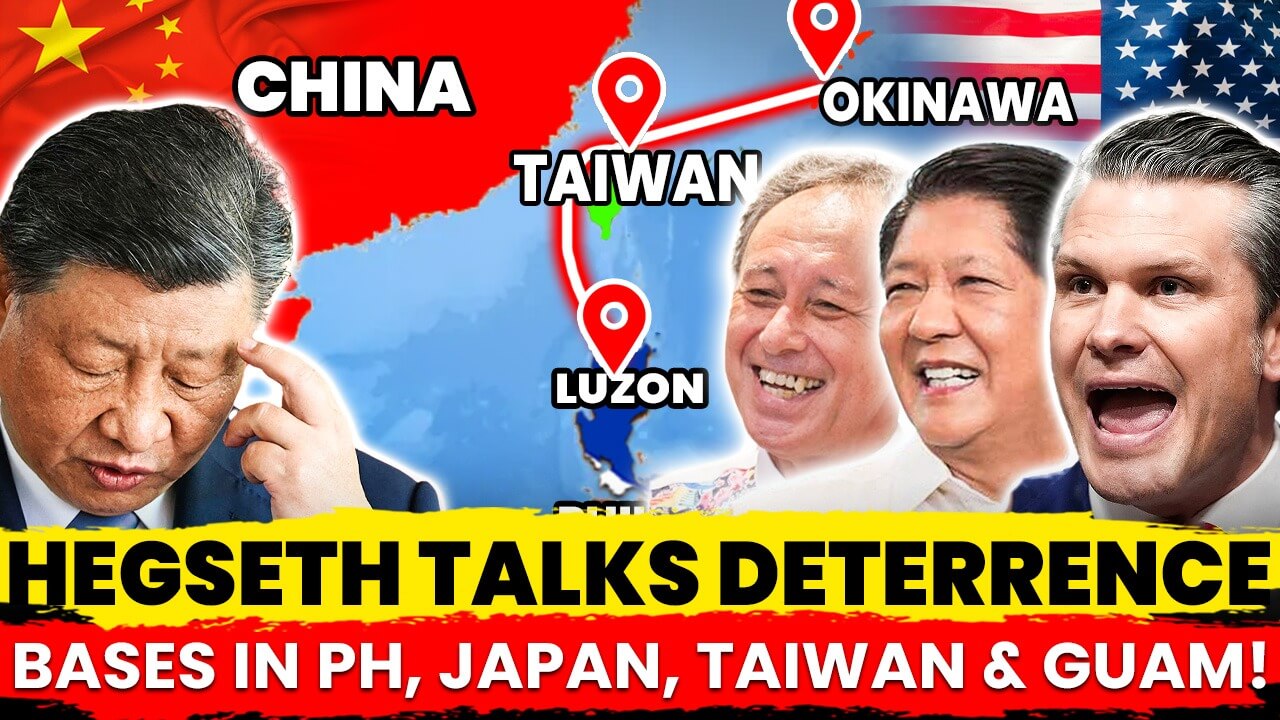Rising Tides: Why South China Sea States Will Stand with the Philippines
“History shows that great powers rarely back down from their aspirations, especially when it involves control over critical maritime regions.” This insight from John Mearsheimer, a leading realist in international relations, captures the high-stakes game unfolding in the South China Sea (SCS), where China’s expansive territorial claims clash directly with the sovereignty of its neighbors. In a world where control over seas often equates to strategic dominance, the South China Sea stands as a vital theater in the struggle for influence.
Stretching over 3.5 million square kilometers, this region not only serves as a conduit for one-third of global trade, valued at over $3 trillion annually, but also houses an estimated 11 billion barrels of untapped oil and 190 trillion cubic feet of natural gas. For littoral states like the Philippines, Vietnam, Malaysia, Indonesia, and Brunei, China’s claims pose an existential threat—not only to national security but also to economic sovereignty.
As China’s growing militarization and its assertion of the so-called “Nine-Dash Line” aim to consolidate nearly 90% of the South China Sea under its control, the Philippines has emerged as a beacon of resistance, rallying neighboring states to its side. In this video, we’ll examine why littoral states, increasingly wary of China’s ambitions, are aligning with the Philippines to uphold a rules-based order, safeguard sovereign rights, and collectively deter hegemonic pressures in the region.
Strategic Importance of the South China Sea: A Global Commons Under Siege
The South China Sea is one of the world’s busiest and most strategically vital waterways, connecting the Pacific and Indian Oceans and providing a critical artery for global trade. An estimated 50,000 vessels navigate these waters annually, transporting goods and resources that fuel economies across East Asia, the Middle East, and Europe. The significance of this passage goes beyond commerce; it underpins the economic and energy security of nations far beyond its immediate borders. With about one-third of global maritime trade flowing through these waters, the South China Sea serves as a lifeline, especially for energy imports critical to rapidly growing economies in East Asia.
Moreover, the South China Sea is home to abundant marine resources, supplying over 12% of the world’s fish and sustaining tens of millions in Southeast Asia who rely on its fisheries for their livelihood. However, these resources are increasingly under pressure as China pursues an assertive policy of control, expanding its presence through artificial islands fortified with military infrastructure and deploying massive fishing fleets backed by its Coast Guard. This buildup threatens the sovereign rights of littoral states, undermining their access to traditional fishing grounds and marine resources.
China’s aggressive actions pose a dual threat to the region: economic coercion and military intimidation. This tension has spurred an emergent coalition among neighboring nations, spearheaded by the Philippines, to counterbalance China’s influence. These countries are advocating for the South China Sea to remain a global commons governed by international law rather than unilateral dominance. Their coordinated efforts emphasize preserving not only economic interests and environmental sustainability but also the principles of sovereignty and maritime rights, as recognized under the United Nations Convention on the Law of the Sea (UNCLOS). In doing so, these states strive to maintain regional stability and uphold a rules-based order in one of the world’s most contested maritime domains.
The Philippines: At the Forefront of Resistance
Legal Victory: The Philippines‘ legal strategy in the South China Sea dispute has set a powerful precedent. In 2016, the Philippines scored a landmark victory at the Permanent Court of Arbitration in The Hague, which invalidated China’s “Nine-Dash Line” claim. This ruling, based on the United Nations Convention on the Law of the Sea (UNCLOS), reaffirmed the Philippines’ sovereign rights over its Exclusive Economic Zone (EEZ), particularly around contested regions like the Spratly Islands and Scarborough Shoal.
Though China has rejected the ruling, the decision strengthened the Philippines’ position as a proponent of a rules-based order in the SCS and encouraged other states to challenge unilateral territorial claims. As legal scholar Julian Ku noted, the ruling “strengthens international norms and offers a viable path for smaller states to push back against larger powers.”
Diplomatic Alliances: Recognizing that legal victories must be supported by strategic alliances, the Philippines has proactively engaged with both regional and global partners. By aligning with ASEAN countries and bolstering defense ties with the United States, Japan, and Australia, Manila has gained crucial support in its maritime disputes. The U.S.-Philippines Mutual Defense Treaty, for instance, has seen renewed commitment through expanded freedom-of-navigation operations and joint exercises in contested waters. Japan and Australia have also played instrumental roles, offering financial and technical assistance to modernize the Philippines’ naval and coast guard capabilities. These partnerships not only deter Chinese aggression but also reinforce a collective stance on the importance of freedom of navigation.
Military Modernization: Amid increasing Chinese militarization, the Philippines has invested significantly in strengthening its military capabilities. The Enhanced Defense Cooperation Agreement (EDCA) with the United States has paved the way for greater U.S. troop presence in the Philippines, along with access to critical air and naval facilities. Recent U.S. allocations, factored into its defense budget, have facilitated joint training exercises and the construction of radar and surveillance systems in strategic locations, bolstering the Philippines’ capacity to monitor and respond to Chinese incursions. Japan and Australia have also supported these efforts, providing patrol vessels, surveillance equipment, and joint training programs.
The Littoral States’ Strategic Calculus: Why They Align with the Philippines
1. Vietnam: Vietnam, which shares a history of maritime disputes with China, has found a natural ally in the Philippines. The two countries have deepened diplomatic and military cooperation, underscored by joint naval patrols and discussions on maritime security. Both nations staunchly support the 2016 arbitration ruling and work closely to counter Chinese encroachment in the Spratly and Paracel Islands. Vietnam’s partnership with the Philippines serves as a buffer against Chinese expansionism, aligning both countries in defense of their sovereignty and UNCLOS-based maritime rights.
2. Malaysia: Malaysia navigates a challenging balance between maintaining its economic ties with China and protecting its interests in the South China Sea. While China is one of Malaysia’s largest trade partners, Malaysia has taken steps to strengthen security cooperation with the Philippines and other regional actors. Malaysia’s recent joint military exercises with the Philippines signal its commitment to a secure South China Sea, despite the economic risks posed by confronting Beijing. As strategic analyst Richard Heydarian notes, Malaysia’s dual approach reflects the “complex calculus of balancing economic necessity with national security.”
3. Indonesia: Though not a claimant in the Spratly Islands, Indonesia’s concerns stem from Chinese incursions near its Natuna Islands. Recognizing the threat to its EEZ, Indonesia has bolstered its naval presence and initiated regional dialogues aimed at securing maritime boundaries. President Joko Widodo’s government has emphasized the need for a collective regional approach, stressing that Indonesia “will not tolerate any violations of [its] sovereignty.” By supporting the Philippines, Indonesia aims to foster a united ASEAN stance to counterbalance China’s growing influence.
4. Brunei: With its limited military capacity, Brunei relies heavily on diplomatic channels and strategic partnerships to uphold its territorial claims. Brunei’s engagement with the Philippines and ASEAN reflects its commitment to a stable maritime order, aligning with regional efforts to resist unilateral actions by any one power. Quiet diplomacy has allowed Brunei to maintain economic ties with China while supporting ASEAN’s broader security initiatives.
The Economic and Environmental Stakes
Apart from sovereignty, the economic implications of China’s control over the South China Sea are profound. The region supports approximately 40 million fishermen and contributes billions to the GDPs of littoral states. Fisheries, however, are under severe threat due to overfishing and destructive practices exacerbated by geopolitical tensions. A report by the Center for Strategic and International Studies (CSIS) estimates that fish stocks in the South China Sea could decline by 50% over the next decade if current practices continue.
Collaborative efforts, such as joint environmental agreements and sustainable fisheries management, have therefore become essential for littoral states. By aligning with the Philippines, these countries aim to safeguard not only their economic interests but also their environmental heritage. Cooperative programs on marine research, habitat restoration, and pollution mitigation offer a united front against unsustainable exploitation of shared resources.
Challenges to Regional Unity
Despite the Philippines’ growing role as a rallying point, several obstacles hinder a fully unified stance. Chief among these is China’s economic leverage over ASEAN nations, many of which rely on Chinese markets, investments, and loans. For instance, China accounts for nearly 20% of Malaysia’s foreign trade and remains a crucial investor across Southeast Asia. Economic coercion, therefore, presents a dilemma: how to counterbalance Chinese aggression without sacrificing vital economic ties.
China’s strategy of dividing ASEAN through bilateral engagements and incentives has further complicated collective action. This “divide and rule” approach, wherein China extends economic incentives to compliant nations, has deterred a unified ASEAN response. However, the Philippines’ growing alliances and advocacy for UNCLOS compliance represent a counter-strategy, drawing ASEAN closer to a shared vision of stability and mutual security.
Future Prospects: Toward a Rules-Based Order
The Philippines’ alignment with other littoral states is not merely a temporary coalition; it signals a broader shift toward a rules-based maritime order that can counterbalance great power dominance. The SCS littoral states, increasingly conscious of the economic and security threats posed by China’s ambitions, are crafting a collective strategy to ensure that sovereignty and international law take precedence over power politics.
While economic dependency on China remains a complicating factor, the benefits of unity in the South China Sea—preserving freedom of navigation, securing economic resources, and upholding environmental sustainability—are undeniable. By aligning with the Philippines, these states are laying the groundwork for a balanced regional order, where cooperation, law, and resilience replace the volatility of unilateral actions. As tensions rise, the Philippines and its allies in the South China Sea appear resolute in their pursuit of a stable and open maritime future.
In this gathering storm, the South China Sea littoral states, anchored by the Philippines’ strategic maneuvers, may very well stand as the first line of resistance against unchecked hegemony, preserving a vital maritime region for generations to come.



